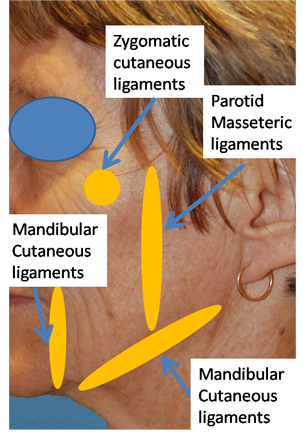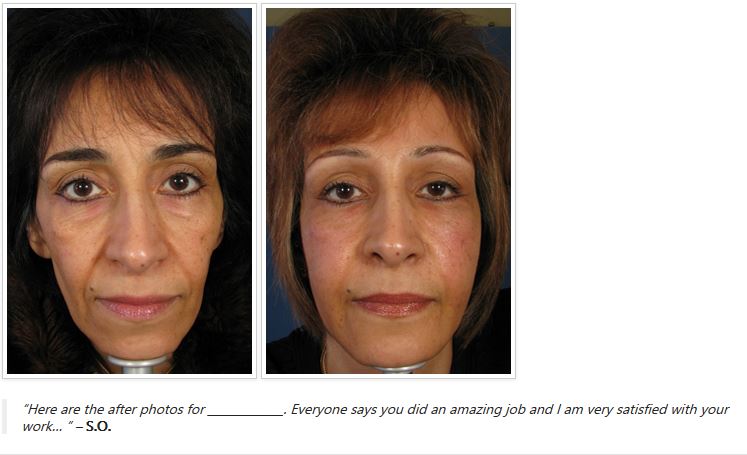Why are my face and neck lifts different? by Dr. Philip Young Seattle | Bellevue Washington: First. I have a lot of experience doing facelifts (Shows Dr Young’s Actual Patients). I’ve done over 1200 and I’ve done almost every imaginable approach to facelifting. Here is a video of me discussing the differences between a deep plane facelift and mini face lift:
What I’ve learned is that there are several ways to do this procedure and it really depends on the person and what he or she wants. I do think that minilifts are not long lasting but could be good for the person who doesn’t want a big difference in the face and neck. As I mentioned in another blog where I show the difference between the many variations of face and neck lifts, the minilift really just pulls up on the facial muscles with sutures. So you are depending a lot on the sutures and subsequent scarring that will hold the lift up. This works for some people but not everybody. I think this lift works best in a patient that has lost a lot of weight and has a lot of skin and loose structures. Also, I find that older patients typically haven loosen their anatomy enough to respond to a minilift more than other types of faces. I find that people that have a little bigger face tend to have stronger tissues that resist the minilift’s forces of pulling with just the sutures. Younger patients also have tighter tissue that respond less to a minilift. If in doubt I think that more traditional approaches get way better release of the structures. The reason for this is that there are many retaining ligaments in the face, see the picture below. The zygomatic cutaneous ligaments are tough fibers that hold the cheek to the bone inferior and lateral to the eye. The parotid masseteric ligaments hold the tissue in front of the parotid to the skin with a long row of fibers from the zygomatic arch to the jawline. The mandibular ligaments hold the skin to the jawline. All of the ligaments prevent the skin from going upward when you do a facelift and if you don’t break them up properly they resist most facelifting attempts and forces. When you do a minilift, there are many times when you do lift the skin up far enough to break up these parotid and zygomatic ligaments. And even if you do, the sutures that you use to pick up the tissues anterior to those ligaments are loose enough to come up and require a lot of force. This is why many minilifts are more painful in actuality than traditional full facelifts. In my experience doing more than 1200 facelifts I have definitely found that to be the case. Most of the time, you really need to do traditional maneuvers to break up those ligaments and this is usually done through working under the facial muscles or the SMAS. Also, knowing how to extend these sub SMAS facelifts over the smiling muscles is a vital technique that most surgeons don’t know how to do. When these zygomatic ligaments are released you can lift up the middle part of the face, the area above the mouth folds (nasolabial folds), much easier. When the parotid masseteric ligaments are properly released you can pull up the jowls and folds around the mouth much easier as well. This more complicated facelift is typically called variations of the deep plane lift, composite lift and zygo-orbicularis lift.
One thing to realize is that not all neck lifts are done equally. Take it from me. I have done hundreds of minilifts with mini neck lifts and there are more definitive ways to pull up the neck. Find out more about necklifts here. There are many shortcuts that you can do that help but really don’t make a huge difference. When I do a neck lift, I remove all of the fatty tissue in the neck by actually cauterizing it away. On top of this, I also take the fat away underneath the chin in a deeper plane. All of this takes time, and shortcuts don’t get to these areas and you are always left with neck laxity and loose skin and fat in the neck. There are also other techniques I do to address the deeper muscles underneath the chin that most surgeons do not know how to do. I have learned over doing so many neck lifts, that cutting the Platysma is not as beneficial as leaving it intact. When you leave it intact you are able to tighten the neck better and I do a corset type of sewing to really tighten up all the neck muscles for a tighter neck. This takes a lot of experience to do.
Thanks for reading, Dr Young
Dr Young specializes in Facial Cosmetic and Reconstructive Surgery and is located in Bellevue near Seattle, Washington
Come visit our website: Aesthetic Facial Plastic Surgery


